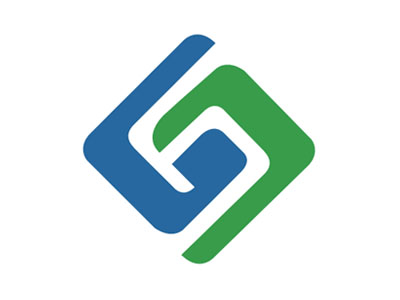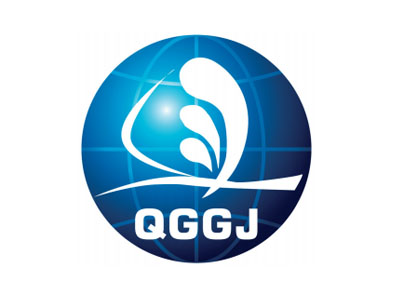PRADA(01913)
Search documents
普拉达(01913.HK)前三季度收益净额为40.7亿欧元 同比增加8.9%
Ge Long Hui· 2025-10-23 12:20
Group 1 - Prada Group reported a net revenue of €4.07 billion for the nine months ending September 30, 2025, representing an 8.9% increase compared to the same period in 2024. Currency fluctuations reduced growth by 2.6%, resulting in a reported growth of 6.3% [1] - Retail sales net revenue increased by 9.3% during the period, driven by year-on-year and full-price sales, with all regions showing growth. As of September 30, 2025, retail sales net revenue accounted for 89.6% of total net revenue [1] - Wholesale channel sales increased by 4.4% compared to 2024, primarily driven by the duty-free channel, aligning with the group's ongoing selective strategy towards independent wholesalers [1] Group 2 - Licensing income increased by 11.4% compared to 2024, driven by contributions from eyewear and cosmetics [1] - Retail sales net revenue in the Asia-Pacific region achieved double-digit growth (+10.4%), with improved trends in mainland China during the quarter [1] - Retail sales net revenue in Europe showed strong performance (+6.3%), remaining stable from the second quarter, with local demand continuing to improve despite a weakening tourism sector [1] Group 3 - Retail sales net revenue in the Americas increased by 14.8%, with accelerating growth in the third quarter, indicating good progress [1] - In Japan, retail sales net revenue increased by 2.6% due to robust local demand and growth in tourism, showing improvement in the third quarter [2] - The Middle East's retail sales net revenue demonstrated steady performance (+21.1%), recording moderate growth in the third quarter compared to a high base [2]
普拉达(01913)前三季度收益净额40.7亿欧元,同比增加9%
智通财经网· 2025-10-23 12:19
Core Insights - Prada Group reported a net revenue of €4.07 billion for the nine months ending September 30, 2025, representing a 9% year-over-year increase at constant exchange rates [1] - Retail sales net revenue increased by 9% year-over-year at constant exchange rates, while Prada's retail sales net revenue decreased by 2% at constant exchange rates [1] - Miu Miu's retail sales net revenue saw a significant increase of 41% year-over-year at constant exchange rates [1] Regional Performance - All regions experienced growth in retail sales net revenue at constant exchange rates compared to the same period in 2024: - Middle East: +21% - Americas: +15% - Asia-Pacific: +10% - Europe: +6% - Japan: +3% [1]
普拉达前三季度收益净额40.7亿欧元,同比增加9%
Zhi Tong Cai Jing· 2025-10-23 12:16
Core Insights - Prada Group reported a net revenue of €4.07 billion for the nine months ending September 30, 2025, representing a 9% year-over-year increase at constant exchange rates [1] - Retail sales net revenue increased by 9% year-over-year at constant exchange rates, while Prada's retail sales net revenue decreased by 2% year-over-year at constant exchange rates [1] - Miu Miu's retail sales net revenue saw a significant increase of 41% year-over-year [1] Regional Performance - All regions experienced growth in retail sales net revenue at constant exchange rates compared to the same period in 2024: - Middle East: +21% - Americas: +15% - Asia-Pacific: +10% - Europe: +6% - Japan: +3% [1]
Prada Logs Higher Sales as Hopes of Luxury Recovery Build
WSJ· 2025-10-23 12:10
Group 1 - The fashion house's revenue increased by 9% compared to the same period last year, after adjusting for currency movements [1] - There is growing optimism for an upturn in demand for luxury goods within the industry [1]
普拉达(01913) - 提名委员会职权范围书

2025-10-23 12:02
PRADA S.p.A. 提名委員會 職權範圍書 於二零二五年十月二十三日經 PRADA S.p.A.董事會批准 提名委員會職權範圍書 1. 第 1 條 宗旨及範圍 2. 第 2 條 委任及組成 1 1.1 本職權範圍書(「職權範圍書」)規管 PRADA S.p.A.(「本公司」)委任董事(「董事 」)的提名委員會的組成、職能及職責,該委員會由董事會根據本公司的公司章程第 21.7 條成立(「提名委員會」或「委員會」)。 1.2 在本職權範圍書並無明確規定且盡量與本職權範圍書一致的情況下,茲提述法律和規管 董事會運作及職能的本公司的公司章程以及香港聯合交易所有限公司證券上市規則(「 上市規則」)。 提名委員會職權範圍書 3. 第 3 條 職責 2 3.1 提名委員會是在董事會內設立的諮詢及建議機構,其工作是協助董事會確定董事會 的最佳組成及規模,通過提出意見、推薦建議及提議,指明出席可能有利於本公司 正確及有效運作的專業人士。 3.2 委員會須進行以下工作: (i) 每年檢討董事會的架構及組成以及董事人數(包括彼等的技能、知識及經驗)、 協助董事會編制董事會技能表,並就董事會組成變動提出建議,以確保充分執 行 ...
普拉达(01913) - 2025 Q3 - 季度业绩

2025-10-23 12:01
Revenue Performance - Prada Group reported a net revenue of €4,070 million for the nine months ended September 30, 2025, representing a 9% increase at constant exchange rates compared to the previous year[2]. - Overall, Prada Group's net revenue growth was impacted by currency fluctuations, which reduced growth by 2.6%, resulting in a reported growth of 6.3%[5]. Retail Sales - Retail sales net revenue increased by 9% at constant exchange rates, with all regions showing growth: Middle East +21%, Americas +15%, Asia-Pacific +10%, Europe +6%, and Japan +3%[2][5]. - The retail sales net revenue accounted for 89.6% of total net revenue, highlighting the importance of direct-to-consumer channels[5]. - The Asia-Pacific region achieved double-digit growth in retail sales net revenue (+10.4%), with improved trends in mainland China[8]. - The Americas saw a significant increase in retail sales net revenue of 14.8%, reflecting strong performance in the tourism sector[9]. - The Middle East recorded robust retail sales net revenue growth of 21.1%, despite a high comparative base[10]. Brand Performance - Miu Miu's retail sales net revenue surged by 41% year-over-year, while Prada's retail sales net revenue decreased by 1.6%[4][6]. Wholesale and Licensing - Wholesale sales net revenue increased by 4.4%, driven primarily by the duty-free channel, aligning with the group's selective strategy for independent wholesalers[5]. - Licensing revenue increased by 11.4%, driven by contributions from eyewear and cosmetics[5].
智通港股投资日志|10月23日





智通财经网· 2025-10-22 16:04
Core Viewpoint - The news provides an overview of the upcoming IPOs, earnings announcements, shareholder meetings, and dividend distributions for various companies listed on the Hong Kong Stock Exchange as of October 23, 2025 [1]. New IPO Activities - Companies currently in the IPO process include: - Baima Tea Industry - Cambridge Technology - Sany Heavy Industry - Dipu Technology - Prada - Lijuz Pharmaceutical [1] Earnings Announcement Dates - Companies scheduled to announce earnings include: - Faraday - Ping An Good Doctor - Longyuan Power - Orient Overseas International - Qingdao Port - China Innovation Investment - Chongqing Machinery and Electric [1] Shareholder Meeting Dates - Companies holding shareholder meetings include: - Datang Power - Andeli Juice - Hongye Futures - Tibet Water Resources - China Anshun Energy [1] Dividend Distribution - Companies with upcoming dividend distributions include: - Hang Seng Bank (ex-dividend date) - Huaxun (dividend payment date) - Wansichang International (dividend payment date) - Zhifeng Industrial Electronics (dividend payment date) - Haitian Flavoring and Food (dividend payment date) - China Shipbuilding Defense (dividend payment date) - Dongfang Xingye Holdings (dividend payment date) - China Resources Mixc Life (dividend payment date) [1][3][4]
普拉达涨超5% 奢侈品巨头LVMH三季度营收意外增长1%
Zhi Tong Cai Jing· 2025-10-15 02:12
Core Viewpoint - Prada's stock has increased by over 5%, currently trading at 44.6 HKD with a transaction volume of 29.27 million HKD, indicating positive market sentiment ahead of its upcoming earnings announcement [1] Company Summary - Prada will hold a board meeting on October 23, 2025, to approve the release of its unaudited quarterly earnings report for the nine months ending September 30, 2025 [1] Industry Summary - On October 14, LVMH, a major player in the luxury goods sector, reported a 1% organic revenue growth in Q3 2025, reaching 18.28 billion EUR, marking an end to two consecutive quarters of decline and significantly surpassing analysts' expectations of zero growth [1]
港股异动 | 普拉达(01913)涨超5% 奢侈品巨头LVMH三季度营收意外增长1%
智通财经网· 2025-10-15 02:12
Core Viewpoint - Prada's stock has increased by over 5%, currently trading at 44.6 HKD, with a trading volume of 29.27 million HKD, ahead of its upcoming board meeting to approve the quarterly earnings announcement for the nine months ending September 30, 2025 [1] Group 1: Company Updates - Prada will hold a board meeting on October 23, 2025, to approve the release of its unaudited quarterly earnings announcement [1] - The stock price of Prada has risen by 5.18% as of the latest update [1] Group 2: Industry Context - LVMH reported a 1% organic revenue growth in Q3 2025, reaching 18.28 billion EUR, ending two consecutive quarters of decline and exceeding analysts' expectations of zero growth [1]
智通港股沽空统计|10月15日
智通财经网· 2025-10-15 00:25
Core Insights - The article highlights the top short-selling ratios and amounts for various companies, indicating significant market sentiment against these stocks [1][2]. Short-Selling Ratios - Anta Sports-R (82020), Li Ning-R (82331), and Great Wall Motors-R (82333) have the highest short-selling ratios at 100.00% [1][2]. - AIA Group-R (81299) follows with a short-selling ratio of 99.20%, while China Resources Beer-R (80291) has a ratio of 94.83% [2]. Short-Selling Amounts - Alibaba-SW (09988) leads in short-selling amount with 3.717 billion, followed by Xiaomi Group-W (01810) at 2.634 billion and Tencent Holdings (00700) at 2.457 billion [1][2]. - Other notable companies include SMIC (00981) with 2.219 billion and BYD Company (01211) with 1.342 billion [2]. Deviation Values - Tencent Holdings-R (80700) has the highest deviation value at 44.97%, indicating a significant difference from its average short-selling ratio [1][2]. - Great Wall Motors-R (82333) and China Lilang (01234) follow with deviation values of 31.15% and 26.81%, respectively [2].
